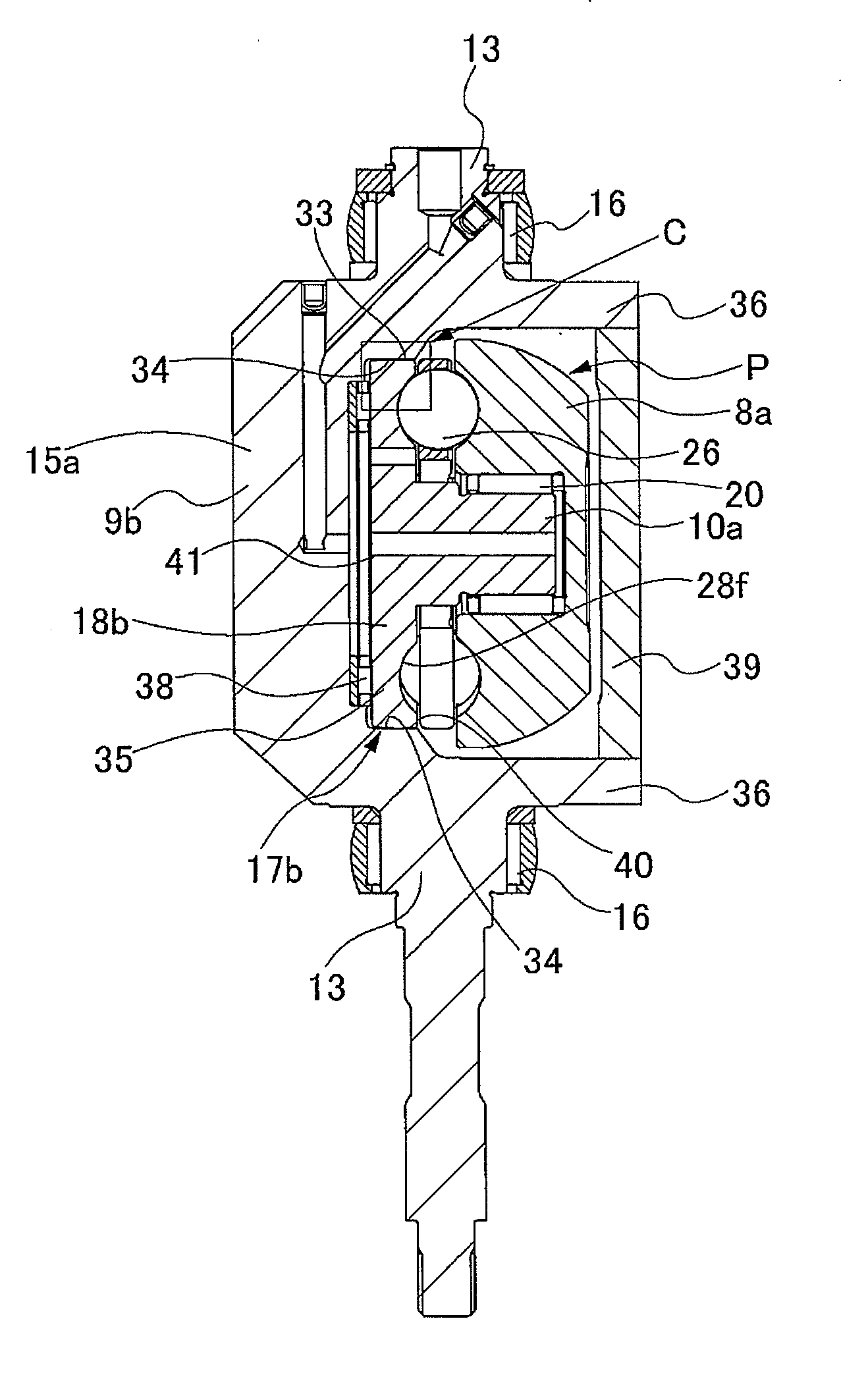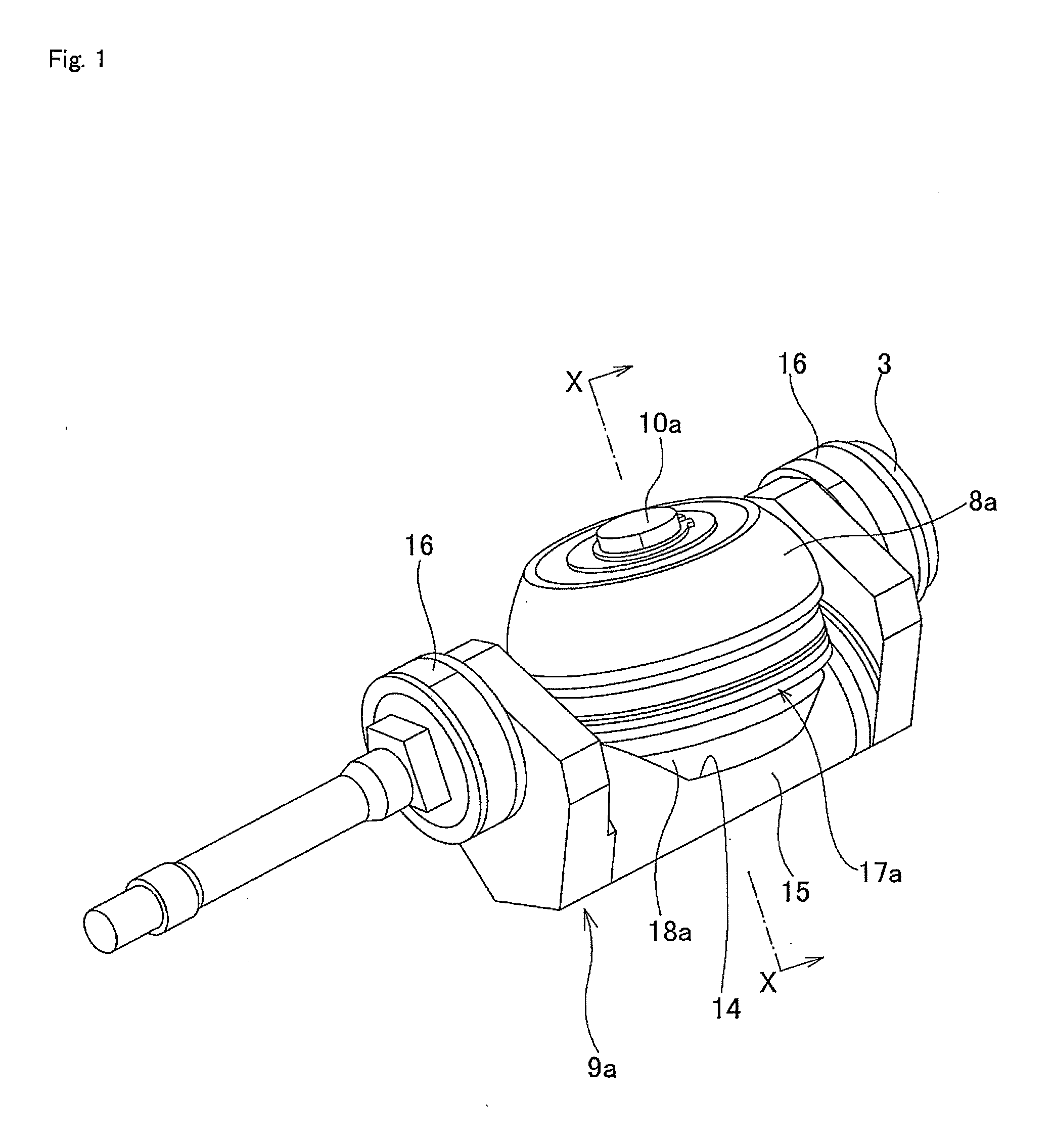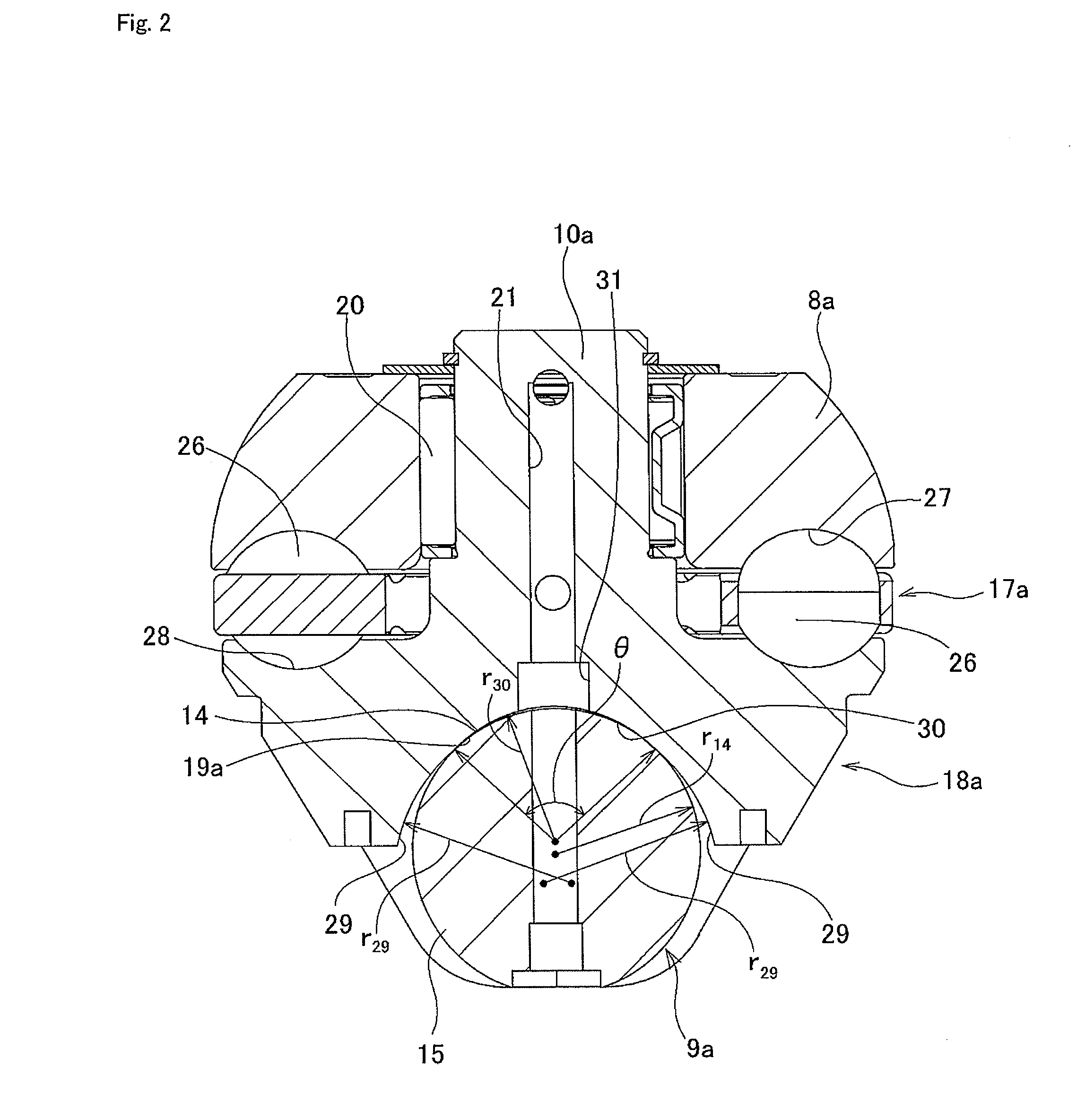Toroidal continuously variable transmission
a technology of continuous variable transmission and rotating shaft, which is applied in the direction of belt/chain/gearing, friction gearing, belt/chain/gearing, etc., can solve the problems of unavoidable cost increase, troublesome manufacturing, management and assembly work of parts, and difficult to maintain the durability of thrust ball bearings, so as to maintain the durability of toroidal continuously variable transmission and maintain the surface pressure. , the effect of maintaining the durability of the thrust rolling bearing
- Summary
- Abstract
- Description
- Claims
- Application Information
AI Technical Summary
Benefits of technology
Problems solved by technology
Method used
Image
Examples
embodiment 1
[0116]FIGS. 1 to 4 illustrate a first embodiment of the present invention. The feature of this embodiment is the maintaining of the durability of an outer race 18a and the thrust ball bearing 17a that comprises this outer race 18a by contriving a design for the shape of the inner surface of a concave section 19a that is formed on the outside surface of the outer race 18a in the radial direction of this outer race 18a. The construction and function of the other parts are the same as those of the second example of conventional construction illustrated in FIGS. 27 to 33 and described above, so the same reference numbers are given to identical parts, and any redundant explanation will be simplified or omitted, such that the explanation below can center on the features of this embodiment.
[0117]In the construction of this embodiment, the inner surface of the concave section 19a above is not a simple cylindrical surface, but rather has a Gothic arch shaped cross section that is formed by s...
embodiment 2
[0125]Next, a second embodiment of the present invention is explained. The feature of the toroidal continuously variable transmission of this embodiment is construction that transmits a tangential force that acts on the power roller by the outer peripheral surface of the outer race and the point of contact where the trunnion comes in contact with the outer peripheral surface of the outer race, while the other construction and function are the same as the construction and function of the first embodiment and conventional construction. Therefore, needless to say, the explanation will center on the featured parts of this embodiment, and for other parts, the same reference numbers as those used in FIGS. 1 to 6 and FIGS. 26 to 33 will be used to simplify the explanation.
[0126]As illustrated in FIG. 7 and FIG. 8, in the toroidal continuously variable transmission of this embodiment, as in the first embodiment, by using construction that transmits tangential force acting on the power rolle...
embodiment 3
[0144]Next, a third embodiment of the present invention is explained. As illustrated in FIG. 9 and FIG. 10, in this embodiment, the width of the contact sections 34a of the trunnion 9c that comes in contact with the outer peripheral surface 33a of the main outer race section 35a along the direction of the axis of rotation of the power roller 8a, in other words, the width in the thickness direction from the inside surface 40 to the outside surface 41 of the main outer race section 35, is formed such that it becomes more narrow than that of the contact sections 34 of the second embodiment.
[0145]That is, in the second embodiment, the contact sections 34 are formed so that they cover the entire surface of the width in the thickness direction of the outer peripheral surface 33 of the main outer race section 35, however, in this third embodiment, construction is such that the contact sections 34 are formed only in the part from a little more on the inside surface 40 side than the center s...
PUM
 Login to View More
Login to View More Abstract
Description
Claims
Application Information
 Login to View More
Login to View More - R&D
- Intellectual Property
- Life Sciences
- Materials
- Tech Scout
- Unparalleled Data Quality
- Higher Quality Content
- 60% Fewer Hallucinations
Browse by: Latest US Patents, China's latest patents, Technical Efficacy Thesaurus, Application Domain, Technology Topic, Popular Technical Reports.
© 2025 PatSnap. All rights reserved.Legal|Privacy policy|Modern Slavery Act Transparency Statement|Sitemap|About US| Contact US: help@patsnap.com



